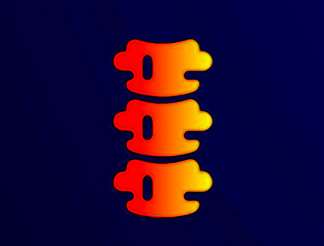Out-Toeing
Causes and Treatment
What is Out-Toeing?
Out-toeing describes the position where the feet are turned outwards when you walk instead of facing straight ahead. If you out-toe, it is sometimes labelled as being ‘duck-footed’. As this position provides stability for children in the first 6 months after they start walking, it may be a normal part of growth and development. However, sometimes it may be linked to other conditions and/or pain.
What causes out-toeing?
Often, out-toeing is thought to be related to a baby’s position in the womb, which may lead to:
The shin bone twisting outwards
Medically speaking, we’re talking about the external torsion (twisting) of the tibia (shin bone). It is because the shins twist outwards that causes the foot to twist outward, too. The tibia normally turns outwards during growth but if the cause is external tibial torsion, then the out-toeing appearance may worsen as your child grows. As kids become more physically active and their feet bear more force, they may be more vulnerable to developing knee pain from patellofemoral pain syndrome.
The hip twisting outwards
This is known as external rotation of the hip, and is usually accompanied by some contraction of the hip muscles as they get used to this position in the womb. The contracted muscles then encourage the hip to stay in this outwardly rotated position. External hip rotation often corrects itself as the muscles adjust to your child walking.
Flat feet
As flat feet have a short arch height (if any), they get more ‘bulging’ on the insides of the feet and ankle as they roll in. When looking at this foot type from behind, you may only be able to see the toes on the outside of the foot. This can create the appearance of out-toeing.
The thigh bone twisting outwards
This is known as femoral retroversion and is the least common cause of out-toeing that we’ve mentioned. When the thigh (femur) angles outwards, the legs, knees and feet angle outwards, too.
When is out-toeing normal?
Depending on the cause of the out-toeing, it may be a normal ‘phase’ that your young child experiences as they learn to walk and run confidently. If your child’s out-toeing is affecting your child’s ability to walk, run and play, if they appear to be tripping over their feet frequently or it has not resolved by the age of 2, they may need assistance to help correct the cause.
How is out-toeing treated?
Treating out-toeing involves addressing the underlying cause, where possible.
While kids are still young and are not experiencing any pain or other symptoms, regular monitoring may be used to assess if the out-toeing is worsening or resolving, keeping an eye out for the development of any painful symptoms.
If the cause is flat feet, orthotics and supportive footwear can be used to adjust the foot alignment, and hence the appearance of out-turned feet.
Any muscular contractures, or muscular weakness, can be addressed using physical therapy, including a stretching and strengthening programme.
Where out-toeing is severe, painful, not responding to conservative treatment or is affecting a child’s quality of life, a referral to an orthopaedic surgeon may be made to discuss if surgical correction is an option.
How We Can Help?
You can always BOOK ONLINE to see one of our experienced Podiatrist and Physiotherapist or simply Call Adelaide Physio And Podiatry Clinic to schedule a time that suits you.
We’ll help you find the right solution to alleviate your pain.
